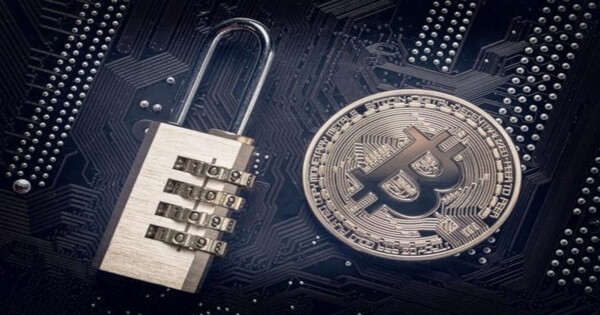Are Crypto Casino Deposits Traceable and How to Protect Your Wallet Privacy
News Publisher Nov 10, 2025 17:01
Crypto deposits are often assumed to be private. Many users believe that because blockchain addresses do not contain names, deposits are invisible.


ALT text: crypto deposits on laptop - Pexels
Crypto deposits are often assumed to be private. Many users believe that because blockchain addresses do not contain names, deposits are invisible. The truth is different. Crypto transfers are pseudonymous, not private. They generate two types of traces: on-chain data and off-chain metadata. Whether a deposit becomes linkable to a person depends on behavior, repetition, and structure more than secrecy.
This article explains where traceability forms, what actually leaks during a deposit, and what wallet hygiene looks like when a user wants to reduce exposure while interacting with crypto-enabled platforms.
Traceability begins with structure, not identity
Blockchains reveal wallet addresses, token types, amounts, fees, timestamps, and occasionally smart contract interactions. None of these show a person’s name, yet they do form a behavioral signature. If a wallet interacts with the same platform repeatedly, always at similar times, using the same token, clustering becomes easier.
Off-chain signals add additional linkage. Platforms can log device type, login timestamp, location range, browser fingerprint, and the email sent when a deposit has completed. When an investigator or data intelligence tool combines on-chain and off-chain signals, patterns can emerge even without personal data.
Deposit flows are where this intersection becomes visible. A clean deposit interface guides asset selection, wallet connection, and confirmation. This structure helps users understand where they are in the process. Repetition of the same flow, however, creates behavioral predictability.
A concrete example can be seen when exploring crypto slots at Joe Fortune. The deposit journey is designed to be straightforward. Users see supported assets, clear direction on how to connect a wallet, and a step-by-step flow that reduces confusion. Platforms like this improve confidence. However, if a user repeatedly deposits using the same wallet or follows the same routine every time they enter crypto slots at Joe Fortune, the deposit history becomes structured. Structure creates signals. None of these signals expose identity directly, however. They simply make it easier to associate repeated behavior with a wallet over time.
After a user understands the flow, chain selection becomes the next privacy decision. Each chain exposes different levels of visibility, ranging from simple token transfers to detailed contract interactions. The more expressive the chain, the richer the metadata.
Visual representation: how chain clarity affects privacy
Below is an Instagram post in which Joe Fortune explains crypto chains in a simple and approachable way. It highlights that different chains have different characteristics, which matters because chain selection affects how much transaction data becomes visible on the blockchain.
Getting to grips with the different chains and what they offer users is key for anyone interested in cryptocurrency and privacy.
Registration signals and when identity may attach
Crypto-supported platforms often allow deposits without immediate identity verification. Account creation can include mobile number verification to secure access. Identity documents may later be requested when users withdraw funds or redeem bonuses. This creates an important nuance. Deposits can be pseudonymous at the moment they occur, but if identity verification happens later, earlier deposit behavior becomes linked to that person.
The most common privacy leaks during deposits
Reusing the same wallet address
Address reuse is the largest privacy leak. Even two transactions can begin to show patterns.
Depositing directly from exchanges
Exchanges batch withdrawals, but timing and transaction cadence can correlate with individual behavior.
Predictable cadence
Depositing the same asset, on the same day, at the same time, creates a recognizable rhythm on the chain.
Accepting large permission requests when connecting a wallet
Some platforms request message signing that includes session information. Users often approve this without reading it.
Merging leftover deposit funds back to a main wallet
This links deposit wallets to a primary wallet permanently through the on-chain history.
Wallet hygiene that reduces traceability
Each action below includes what it protects and also what it cannot protect.
Create a fresh wallet or fresh deposit address each time
Protects: clustering and session linkage
Does not protect: device-side metadata such as IP or browser fingerprint
Vary timing and deposit amounts
Protects: temporal clustering
Does not protect: identity verification later in the flow
Separate deposit wallets and main wallets
Protects: cross graph merge
Does not protect: metadata from the same device
Only approve minimal wallet permissions
Protects: signature leakage
Does not protect: visibility of the transfer itself
Avoid reconsolidating deposit wallets
Protects: address merging
Does not protect: patterns created before consolidation
What wallet hygiene actually achieves
Wallet hygiene increases anonymity. It does not erase blockchain records. The blockchain will always show that funds moved from one wallet to another. What wallet hygiene achieves is the reduction of correlation. When wallets, timing, and patterns do not overlap, observers have less to work with.
Design quality influences privacy outcomes
Clear deposit UX makes platforms easier to use. Transparency about supported crypto and simple walkthroughs give users confidence. Well-structured flows are user-positive. They can also create predictable patterns, and predictable patterns form traceable metadata.
Chainalysis reporting notes that behavioral clustering is one of the strongest ways to identify on-chain activity, even in pseudonymous environments.
A simple privacy checklist
• Use a unique deposit address per session
• Do not create fixed routines
• Separate deposit and main wallets
• Minimize wallet permissions
• Never reconsolidate deposit wallets
Crypto deposits are not naturally private. They are observable. Privacy comes from reducing overlaps and avoiding habits that produce patterns. When the behavior behind the wallet changes, the traceability weakens.
Image source: Shutterstock
.jpg)